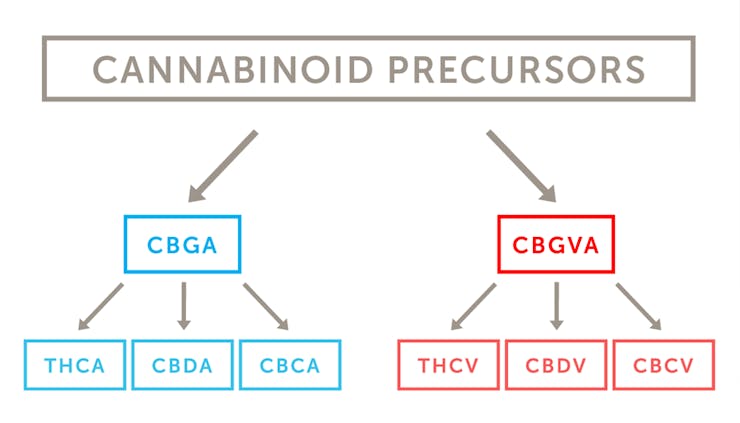Compounds in the cannabis plant, such as THC and CBD, which have the ability to interact with cannabinoids receptors in the body’s endocannabinoid system. These interactions may result in a variety of subjective and therapeutic effects including euphoria, appetite stimulation, and relief of symptoms like pain. The cannabis plant produces dozens of known cannabinoids, each with different characteristics and potential effects. Phytocannabinoids are compounds produced in the cannabis plant, and endocannabinoids are compounds produced in the body.
“What is the cannabinoid content of this strain?”
“I’m looking for a product that contains only non-intoxicating cannabinoids like CBD.”
What are cannabinoids?
Cannabinoids are a class of compounds produced in the resin glands of the cannabis plant. THC (tetrahydrocannabinol) and CBD (cannabidiol) are the two most well-known cannabinoids, but cannabis produces dozens of others such as THCV, CBN, and CBC. Cannabinoids aren’t only found in cannabis; they are also produced naturally in the body. However, the cannabinoids produced in our bodies—called “endocannabinoids”—behave differently than those found in cannabis, which is why we don’t feel high off of our own endocannabinoid supply.
What do cannabinoids do?
In the human body, cannabinoids interact with a natural biological system called the endocannabinoid system (ECS). This system is believed to play an important role in regulating biological functions like sleep, appetite, and mood. In service of this system, the body naturally produces its own cannabinoids like anandamide and 2-AG; however, these cannabinoids don’t behave in the same way that plant cannabinoids like THC do.
Different cannabinoids do different things. For example, CBD affects cell signaling in such a way that may suppress seizure activity without inducing any sort of intoxicating effects. THC, on the other hand, readily interacts with a particular type of cannabinoid receptors in the brain, which causes us to feel high.
Cannabinoids can offer us humans (and other animals) benefits by way of our endocannabinoid systems, but what do cannabinoids do for cannabis—the plant that produces them? A number of theories have been proposed around the protective functions of THC and other cannabinoids for the plant, including UV protection and antimicrobial benefits. However, the exact purpose of plant cannabinoids has yet to be pinned down.
The difference between cannabinoids and terpenes
Cannabinoids and terpenes are two types of marijuana compounds that have received increasing attention by cannabis enthusiasts and researchers. Both are produced in the plant’s resin glands, but perform different functions. If cannabinoids work by interacting with our endocannabinoid system, what is the role of terpenes?
Terpenes are aromatic compounds that lend cannabis its many different fragrant scents, from sour skunkiness to sweet citrus to earthy musk. They may also be involved in shaping the subjective and therapeutic effects of cannabis, but research is yet to fully investigate this role. So far, only one cannabis terpene—caryophyllene—seems to interact with our body’s cannabinoid receptors.
